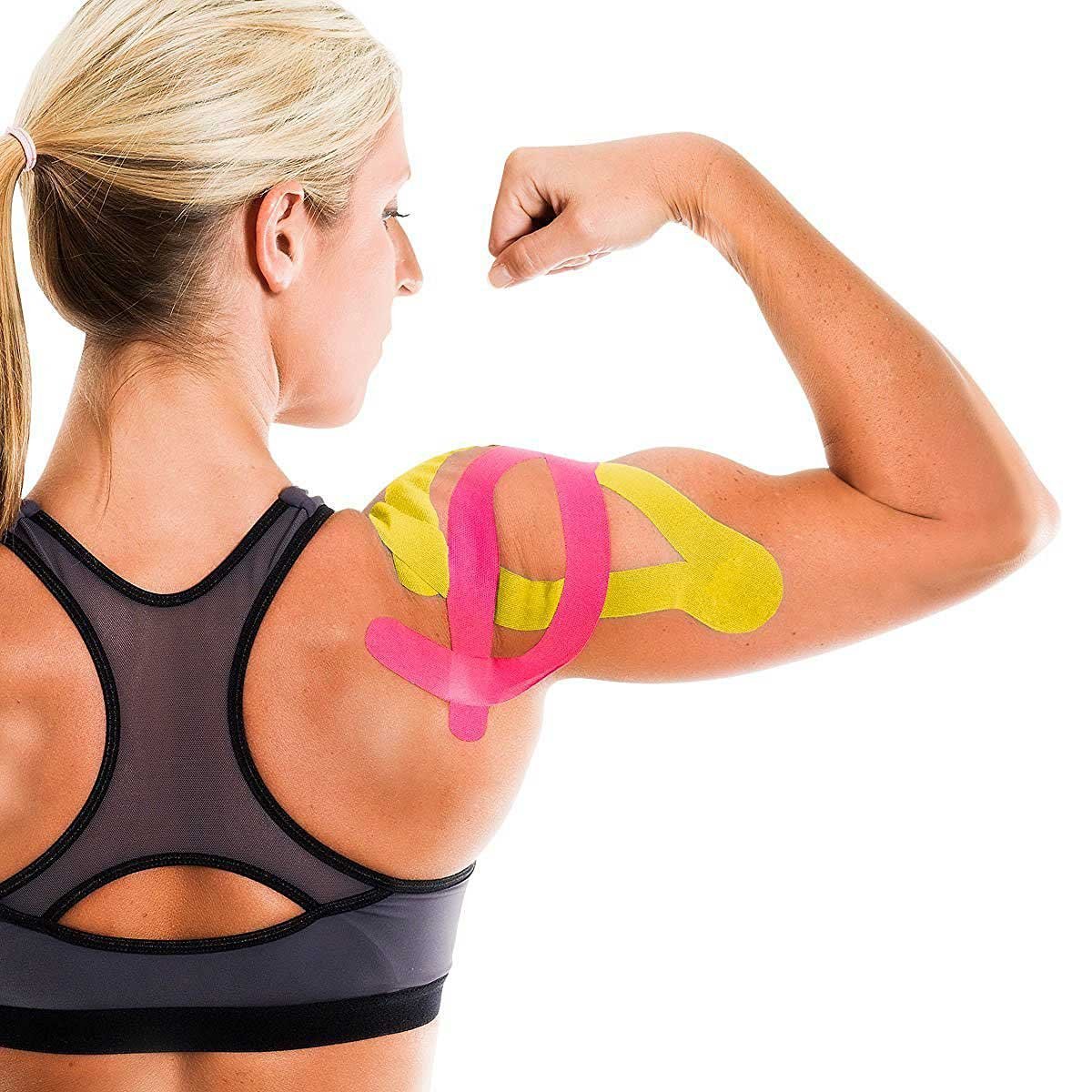Since its first appearance in the 2008 Beijing Olympics, kinesiology tape has become the hottest modality in sports recovery and rehabilitation for high-level athletes and weekend warriors alike. Kinesiology tape is now commonly used in physical therapy clinics, chiropractic offices and many other medical practices.
You can even find them in some local pharmacies and sports equipment stores. So if you’re still not exactly familiar with what kinesiology tape is or what it is used for, here are some quick facts that should answer your top questions.
Table of Contents
What Is Kinesiology Tape?
Kinesiology tape was first developed by a Japanese chiropractor, Dr. Kenzo Kase, in the 1970s. Unlike the traditional athletic tape that most athletes have relied on for years, kinesiology tape is stretchy, thin, and most importantly, allows a safe range of movement even after application. It is an innovative therapeutic technique engineered to enhance and prolong the benefits of manual therapy. When applied correctly, kinesiology tape can relieve pain, reduce swelling and inflammation and provide support and stability.

What Is Kinesiology Tape Made Of?
Kinesiology tape is designed to mimic the thickness, weight and elasticity of human skin. They are typically made of 100% cotton or synthetic elastic material with Lycra, with a 100% poly-acrylic adhesive. Most kinesiology tape products are latex-free, hypoallergenic, water-resistant and very breathable.
How Does Kinesiology Tape Work?
When applied on the skin with little tension, kinesiology tape gently lifts the top layers of skin and connective tissue away from the muscles underneath. This creates more space for blood and lymphatic fluid flow while also relieving pressure on local pain receptors. Conversely, the tape can be applied with more tension for added support and stability of weak muscles. Studies have also shown that the sensation of kinesiology tape on the skin acts as a cue for correct alignment and posture.
What Are Some Kinesiology Tape Benefits?
Some significant benefits of kinesiology taping include:
- Instant pain relief
- Muscle spasm and cramp prevention
- Accelerated recovery from muscle overuse, bruising and contusions
- Reduced swelling, inflammation and edema
- Enhanced strength and corrects muscle imbalances
- Muscle and joint support without the range of motion restrictions
- Improved posture and spine alignment
- Highly versatile and can be used anywhere on the body
How Do I Know If I Need Kinesiology Tape?
Kinesiology tape is incredibly versatile and can be used to treat conditions on all parts of the body, such as:
- Sprains and strains
- Chronic or acute pain
- Swelling/Edema
- Bruises
- Muscle weakness or imbalance
- Misaligned muscles and joints
- Muscle overuse, fatigue and soreness
- Sports injuries
- Arthritis
- Tendonitis
However, keep in mind that kinesiology taping is not a permanent solution and cannot replace other forms of medical treatment. If you have an injury or are experiencing any physical pain or discomfort, we recommend consulting with your doctor or physiotherapist to determine if kinesiology taping is suitable for you.
How Is Kinesiology Tape Different From Traditional Athletic Tape?
Traditional athletic tape is rigid and compressive. It aims to restrict and prevent any movement in the injured area to reduce the risk of further aggravation. While the limitation of movement is sometimes necessary for severe injuries, most cases do not benefit from complete immobilization. Kinesiology tape provides the support and stability required for a safe range of motion. This is especially advantageous for those who wish to speed up their recovery without sacrificing training or daily activities.
Kinesiology tape can also stay on the skin and continuously provide therapeutic benefits for several days at a time. On the other hand, traditional tape must be taken off after several hours as it restricts circulation and can cause adverse skin reactions after prolonged use.
How Do I Use Kinesiology Tape?
Although kinesiology tape is easily accessible, we recommend consulting a professional to learn the appropriate taping technique for your specific condition before trying taping for yourself. Incorrect taping will feel uncomfortable and possibly even prolong your recovery time.
What Are Some Common Taping Configurations?
Some coming taping configurations are the “I”, “Y”, “X” and fan shapes. Nowadays, there are also pre-cut designs to make self-application easier and faster.
Who Can Use Kinesiology Tape?
Almost anyone can use kinesiology tape, not just athletes! If you are experiencing any soreness, pain, swelling or bruising in your muscles or joints, kinesiology tape can help alleviate these symptoms. However, there are some instances when you should not use kinesiology tape, for example, if you have:
- Open wounds as taping can lead to infections or skin damage.
- Active cancer as increased blood flow can encourage cancerous growth.
- Deep vein thrombosis, increased blood flow from taping can dislodge the blood clot and be potentially fatal.
- Diabetes and have lost sensitivity in your extremities. You may not notice if there is an adverse reaction to the tape.
- Fragile skin due to age, medication or a condition, taping can tear your skin.
Author’s Bio
Colin Hegarty is a content writer for BreezeMaxWeb that helps businesses showcase their brand through enticing copy. When he’s not working, you can find him playing net in a local beer league or biking around the city.





